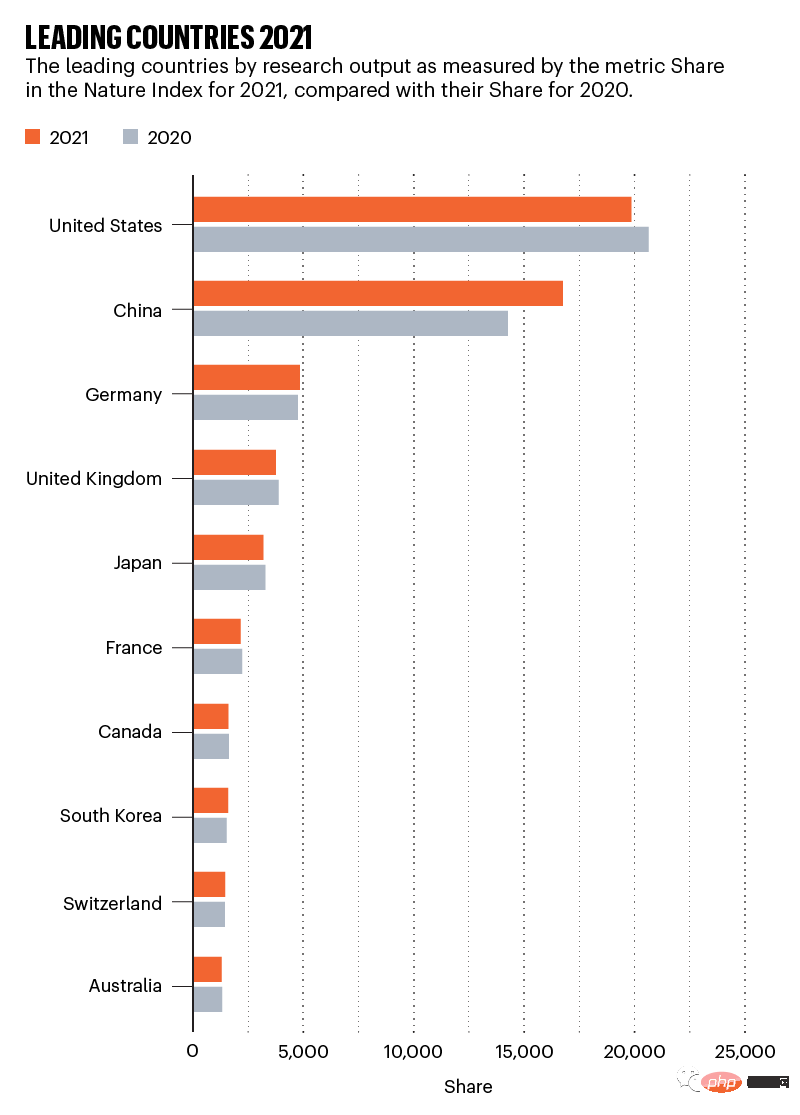
Just now, the 2022 Nature annual index report has been released.
Among the top 50 research institutions, the 31 institutions with the fastest growth are all in China.
In contrast, there are only two Chinese universities in the top ten in the 2021 list, namely Southern University of Science and Technology in Shenzhen and Shanghai Jiao Tong University.
 ##
##






Then, in 2017, the Chinese government announced the "Double First-Class" initiative, identifying 140 universities with the potential to become world-class institutions.
Not only that, the government has also designated some disciplines and majors, determined to become a leader in the world.
Lin said, "I don't think the Double-First-Class Plan was run for any vanity purpose...Although there are definitely considerations of international reputation, the investment is real, just to develop some of China's We consider subjects that are more important, and then strive for corresponding strategic dominance."
"This is not just a matter of international rankings, but also about competition with the United States at the top strategic level."
Tsinghua University in Beijing Hamish Coates, director of higher education research at the university, said, "Sustained and adequate funding will also have a positive impact. Researchers can plan their research routes in the next few years in a methodical manner based on funding."
"Take Double First-class For example, in this strategy, the Chinese government has promised to put scientific development first, at least until 2050. This shows that the government is very clear about how scientific research is conducted."
Coates responded expressed some different views. He believes that there is a critical value in the amount of research being conducted, and once it is reached, the Chinese government's investment in scientific research will gradually decrease. Although, he does not think this phenomenon will appear in the next few years.
"This situation has occurred in traditional scientific research powers such as the United Kingdom and the United States. For example, if you invest 1 million US dollars in scientific research in the United States, the results you will achieve must be less than investing 100 million US dollars in China. Ten thousand US dollars. This is the most basic law of economics. One day, China’s investment in scientific research will also experience diminishing marginal returns.”
In the year from 2020 to 2021, China’s scientific research The proportion of institutions in Nature is rising faster than that of institutions in other countries or regions in the world. Is this a coincidence?

# Thinking more deeply, is there any relationship between the COVID-19 epidemic and this index? Lin said it's impossible to have a 100% correct answer.
"In the UK, in order to ensure the safety of students during the epidemic, the government required vigorous development of online teaching, and the government also provided a lot of support. This may be a reason for the slowdown in scientific research progress in the UK. Therefore, I can Presumably, researchers in Western countries also have other things to be busy with. However, this is just my conjecture. It is impossible for me to find data to confirm my conjecture."
"There is no relevant data to verify it. Our reasoning. We cannot say with certainty whether researchers in China are less affected by the COVID-19 epidemic than researchers in other countries. I have always been cautious about issues related to the epidemic."
Coates believes, "Whether the epidemic has affected Nature's index table, how it has been affected, and how much it has been affected, it is too early to discuss these issues. A conclusive result may not be available for a few years. In short, it cannot be unilateral. Attributing all changes to the new crown epidemic."
Then, Lin pointed out another problem. Scholars all over the world are lamenting the cultural phenomenon of “publish or be eliminated.” This means that if the results of a study are not published in any journal, then the study is destined to be eliminated.
Under the influence of this idea, it has become particularly important for researchers to publish articles in high-impact journals. This phenomenon, or trend of thought, is particularly common in China.
Also, this phenomenon may not be so troublesome in the UK. Researchers in the UK do not need many published papers to endorse themselves before starting their scientific research journey, but this is not the case in China. Students from Chinese universities must publish a certain amount of articles in journals when looking for a job. Even master's students have relevant requirements.
In addition, if Chinese students have not published a paper during their graduate studies, they will not be able to graduate.
Lin said many researchers in Western countries have decried the stress caused by this environment. Setting standards by requiring the number of published papers can create a vicious work environment.
And this pressure to publish papers can partially explain the phenomenon that China’s scientific research institutions are becoming more and more dominant and rising faster and faster.
Lin believes that China’s higher education system can take some measures to alleviate the excessive pressure of “issuing documents”. Weakening the emphasis on the number of publications can reduce the pressure on researchers, thereby increasing scientific research output.
In China, scholars basically stop doing scientific research when they reach the age of 60, and start focusing on educating students. However, in the West, 80-year-old scholars are still competing with young people for funding.
This is the difference in environment.
It is impossible to predict or explain observed trends in isolation. Without looking at it as a whole, it is difficult for us to understand why there is such a big difference between China’s Nature index this year and last year. Why are the development speeds of research institutions so different?
However, judging from the current situation, China's scientific research funding has always been sufficient. This year's strong performance may well be a harbinger of things to come.
In short, although there may be problems of one kind or another, the future is promising.
The above is the detailed content of The 2022 Nature annual index is released, with China accounting for 31 of the 50 fastest growing institutions!. For more information, please follow other related articles on the PHP Chinese website!
 what is mysql index
what is mysql index
 What is highlighting in jquery
What is highlighting in jquery
 Ethereum browser blockchain query
Ethereum browser blockchain query
 How to retrieve Douyin flames after they are gone?
How to retrieve Douyin flames after they are gone?
 How to solve the problem of 400 bad request when the web page displays
How to solve the problem of 400 bad request when the web page displays
 Commonly used search tools
Commonly used search tools
 Free software for building websites
Free software for building websites
 What is the basic concept of artificial intelligence
What is the basic concept of artificial intelligence




